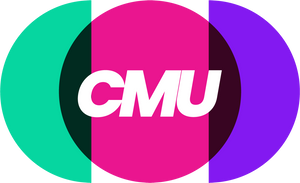Digital revenues collected by the world’s songwriter collecting societies topped €5 billion in 2024, representing an increase of 10.8% year on year, according to the new ‘Global Collections Report’ published by CISAC.
Digital income now accounts for nearly 40% of all the money collected by songwriter societies, or collective management organisations, like PRS, SACEM, GEMA and ASCAP. The other two main revenue streams - broadcast and performance - are some way behind, accounting for 27% and 26.7% of revenues respectively.
Total society collections across all revenue streams were up 7.2% at €12.59 billion, which is good news. Though, as is the norm at the moment, official statements celebrating the growth are accompanied by concerns regarding the negative impact AI will have in the coming years, if AI companies are able to get away without paying for the music they use when training their models.
“This year’s results are testament to the adaptability and resilience of creators’ collective rights management in a rapidly changing environment”, says CISAC Director General Gadi Oron. “Yet, alongside this success, new challenges brought by artificial intelligence technologies threaten the future of the creative sector”.
Generative AI is potentially a big new licensing revenue stream for the music industry, of course, and Universal Music CEO Lucian Grainge was spinning it as such in his most recent investor call.
However, that requires persuading - or forcing - AI companies that are making use of existing music to negotiate licensing deals, rather than relying on legal arguments for why they can use music without the industry’s permission.
Getting AI companies to the negotiating table will require litigation and possibly copyright reform. The major record companies have filed test case lawsuits in the US, but in Europe things are being led by CISAC member collecting societies GEMA and Koda.
As for the existing revenue streams, performance income - ie songwriter royalties from concerts and background music in public spaces - grew at a similar pace to digital, up 10.4% to €3.37 billion.
Broadcast income from TV and radio, traditionally the biggest revenue stream for songwriters and their publishers, grew 1.2% in 2024 to €3.41 billion, after declining in 2023. It’s still the second biggest revenue stream overall, though only just.
That said, it’s always worth remembering that CISAC’s annual stats report - although providing valuable insights on revenues and trends - only includes income that flows through the collective licensing system.
That is the majority of the income on the songs side of the music rights industry, but some revenues flow directly through music publishers, especially in Anglo-American markets.
Therefore, not all streaming income is captured in the €5 billion figure in the CISAC report, as a portion of streaming money for Anglo-American repertoire does not flow through the societies.
And in TV, the big sync deals negotiated with studios and producers in the US begin with upfront payments that flow through publishers not societies. And - with the globalisation of TV on digital platforms - there are even more direct deals being done in that domain.

